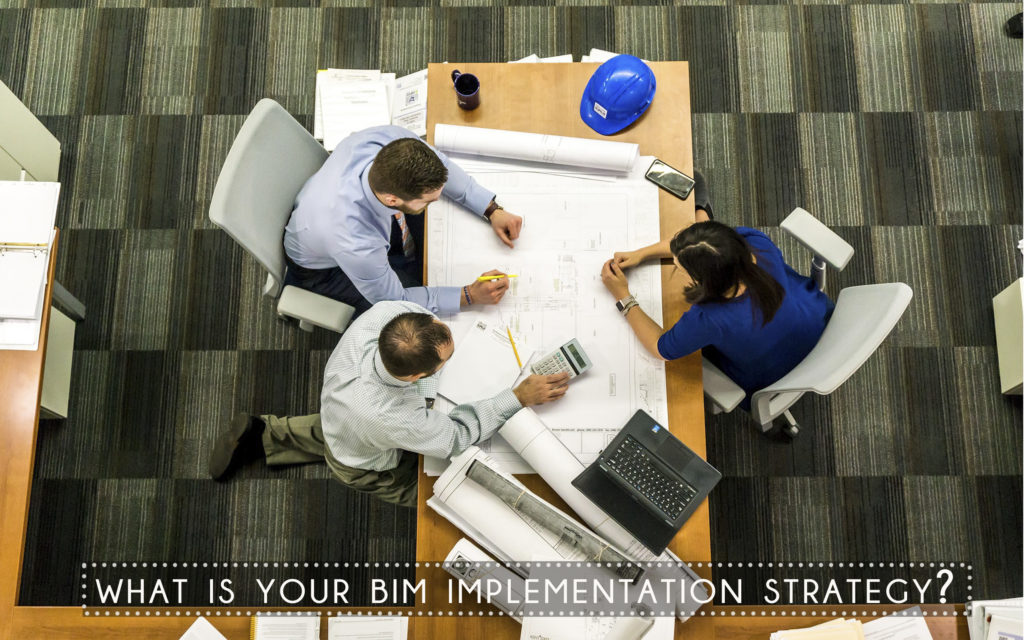Technical Area | Articles
The place to solve all your BIM doubts
What is your BIM implementation strategy?
BIM Implementation Strategies Construcción Offsite Workflows
As Peter Zyskowski, Director of Design Technology at THW Design said, ‘If only one book were to be written about BIM, it might have “DON’T PANIC” printed in large uppercase letters on the front cover.’
Transition to BIM is undoubtedly hard. It is likely to demand significant upfront investment to discourage you even before you start. Buying new software, training professionals and accommodating delays in project work are only but few visible upfront investments you are likely to make. Secondary investments like changes in your business operations, internal processes and technology are other obstacles BIM implementation will pose. Discouragement is likely to follow you all the way through.
So with all these hurdles to deal with, if you fear change. I will say, it is only natural, and you are one amongst many who have resisted BIM since long for fear of a change.
But with time, if you are beginning to see challenges as opportunities for growth, and BIM as the only possibility for the future. Then I bow to you. And to you, the brave one, I dedicate this post, highlighting why good preparation is an absolute must for a smooth transition from 2D to BIM, and how you too like many other successful organizations could make your transition smooth and least disruptive.
A short guide to BIM implementation.
Since implementing BIM is going to affect the core business activities in your organization, and is going to demand change in every part of your organization. It is important that you make the transition slow, but deep and thorough.
In my years of experience, I have seen that organizations which have successfully transitioned to BIM with least collateral damage, have one thing in common. They all have an absolute plan in hand. They are all well prepared and know exactly what to do. how to do. and where to do. And that is exactly what I will define in this post. The ‘how to do’ and ‘where to do’ in the road to BIM implementation, so that the ‘what to do’ becomes apparent to you.
Defining the ‘how’.
Defining the ‘how’ in the context of BIM implementation is simply to ask yourself, how do I plan to implement BIM? The answer to which is likely to lead you to three other important questions.
- Why am I taking this arduous journey to implement BIM? In other words, what are the goals that I wish to achieve through BIM implementation?
- After I have listed those goals, what plan of action should I follow to achieve those goals in the easiest possible way?
- After I have listed my plan of action, how do I execute it?
In essence, I define my vision, plan of action and operational strategy with an aim to find a guiding light which shall guide my steps all along with the transition to BIM.
This is important because, without a guiding light, it is easy for me to lose way on the transition. But when I am crystal clear on my goals and know exactly what strategies to implement so that my business and internal processes transition smoothly, or which software to invest on, such that my software interoperability is high. I would have a far-sighted approach. And this farsightedness will go a long way in saving me from poor decisions, loss of time, money, resources and unnecessary frustration.
Defining the ‘where’.
Once I have defined my vision, action plan and operational strategy. It is now time to ascertain the exact departments within my organization ‘where’ I must execute those changes. This knowledge of where to implement a change is important, because an organization within the AEC industry is not a monolithic whole, but sum of different parts which support and nourish each other. So if I initiate a transition without the knowledge of where and when to execute a change within each part, it is apparent that in the haze of complexity, I shall miss implementing change on certain important parts, which otherwise are essential to the smooth functioning of other parts within the organization.
I have therefore, hereby identified four such departments, that will likely be affected by BIM implementation in any organization, and have highlighted certain important points which might help you in formulating a BIM implementation strategy for your organization.
- Business operations: BIM will deeply affect the way business and policy operates in your organization. Right from optimizing existing activities to developing new business opportunities. It will have a widespread influence on every part of your organization. Therefore, it is always beneficial to scan your current business model looking for areas that are likely to become irrelevant in the future, and identifying those which might bring positive business transformation.
- Internal processes: As business operations and activities change, they are sure to demand changes in your internal processes as well. Therefore, it is appropriate that you redefine your internal processes to reflect your company’s guidelines and your organizations' technical operations, to provide a reference framework for your employees.
- The technical staff: BIM is going to have a substantive impact on your workforce. Whether you hire new professional BIM personnel or plan to train your existing workforce on BIM. It is important, in either case, that each member of your workforce is allowed active participation in BIM implementation so that they become aware of the nuances within your organization.
- Technology: This is the most visible and the most talked about investment that you will make when transitioning to BIM. It is not only going to impact future resourcing and training, but also software interoperability. Therefore, it is important that you pay special attention to software selection keeping in mind individual competencies and business processes within your organization.
Finding the ‘what’.
As you see, the ‘how’ – goals, action plan and operational strategy, and the ‘where’ – business operations, internal processes, technical staff and technology are closely related to each other. For example, without defining your business processes, it is impossible to lay guidelines for your workforce. And without defining your future goals, it is impossible to define your business process.
Therefore, ‘what to do’ or ‘how to implement BIM’ is a complex matrix of defining the ‘how’ – goals, action plan and operational strategy for your organization. And implementing it in the ‘where’ – business operations, internal processes, technical staff and technology of your organization.
In my next post, I shall explain this matrix in detail, and write on the correct approach to relate the ‘how’ to the ‘where’, which otherwise I have seen is commonly misunderstood by organizations beginning to implement BIM, and as a result, fail sooner than they should.
If you are interested in what others have thought on this Guide to BIM Implementation, click the link & If you liked what you read, I would request you to give back to all infrastructure industry people:
- Share this article at social media
- Leave a comment below, and tell me what you think about this.
- Join the Infra Pioneer Group so we can together take this further.
Source: https://www.infrapioneer.com/what-is-your-bim-implementation-strategy/











